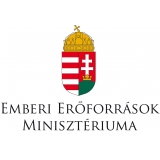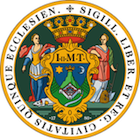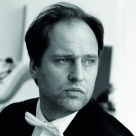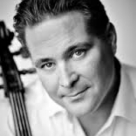Main Sponsors
-
 Reiso Pécs
Reiso Pécs -
 Hotel Lycium****
Hotel Lycium**** -
 Pécs ZOO
Pécs ZOO -
 http://www.mecsekegyesulet.hu/
http://www.mecsekegyesulet.hu/ -
Doro Ékszer
-
 Hetényi Pincészet
Hetényi Pincészet -
 Zsályaliget Élménypark
Zsályaliget Élménypark -
 Fabrik Barkács Szaküzlet
Fabrik Barkács Szaküzlet -
 Katica tanya
Katica tanya -
 E.ON Hungary
E.ON Hungary -
 http://www.ipark-pecs.hu/
http://www.ipark-pecs.hu/ -
 https://www.otpbank.hu/otpklub/Fooldal
https://www.otpbank.hu/otpklub/Fooldal -
 http://www.pecsibalett.hu/hindex.html
http://www.pecsibalett.hu/hindex.html -
 www.lakics.hu
www.lakics.hu -
 Gépszer
Gépszer -
 http://www.kormany.hu/hu/emberi-eroforrasok-miniszteriuma
http://www.kormany.hu/hu/emberi-eroforrasok-miniszteriuma -
 http://www.pnsz.hu/
http://www.pnsz.hu/ -
 http://www.pecs.hu/
http://www.pecs.hu/ -
 Mischl Autóház
Mischl Autóház -
 Öko-Trade Ltd
Öko-Trade Ltd -
 Bóly and Vicinity Savings Bank
Bóly and Vicinity Savings Bank -
 Mecsekerdő Forestry Ltd
Mecsekerdő Forestry Ltd -
 http://www.deltakarek.hu/
http://www.deltakarek.hu/ -
 University of Pécs
University of Pécs -
 http://kloe.hu/
http://kloe.hu/ -
 http://www.lafarge.hu/
http://www.lafarge.hu/ -
 http://www.gondoldo.hu/
http://www.gondoldo.hu/


Five Colours: GOLDOCKER
16 May 2014. 19:30 | Béla Bartók National Concert Hall (Palace of Arts)
For Grown-Ups | Pannon Series 2013/2014 Palace of Arts, Budapest |
- Orbán György: Serenade No.4
- Dohnányi Ernő: Konzertstück for Cello and Orchestra
- Richard Strauss: Don Quixote, op. 35
Programme
Orchestra
Pannon Philharmonic OrchestraConductor

Tibor Bogányi
In 2017/2018, he is spending his seventh season as chief conductor of the Pannon Philharmonic.
Tibor Bogányi is of Hungarian descent and is regarded as the most interesting and talented member of the generation of Finnish conductors. At the age of 28 he was appointed Chief Conductor of… More
Soloist

Jan-Erik Gustafsson
cello
The Finnish Cellist Jan-Erik Gustafsson is one of the most outstanding and sought after soloist and chamber musician in the international music world today. He began his studies with Markku Luolajan-Mikkola at the West Helsinki Music Institute. He studied further… More
Ticket Prices: 5.990 Ft, 4.990 Ft, 3.990 Ft, 1.000 Ft
About the Programme
György Orbán doesn't think that the mixing of styles is from the devil. In his Serenade No.4, "one can hear the early Stravinsky, then Shostakovich, certain jazz elements, the film music composer Nino Rota, even Tom and Jerry” – writes one of his critiques. The composer's will "paying tribute to Bartók and Mahler, in the spirit of pentatony”; and we shall add to that: with tested and approved tools, never leaving the well-known path.
Also Ernő Dohnányi was a conservative composer, who as young started on the Brahmsian way, which he never moved away from, unlike his peer Bartók. The op.12 is essentially a three-movement cello concerto composed in one; and the title Konzertstück recalls Schumann. Its mood is close to the cello concertos of the later mentioned composer and Dvořák.
The cello plays the leading role in the fantastic poem Don Quixote, too; Strauss impersonalised the knight with a sorrowful countenance. One can easily follows his adventures; the music vividly describes the flock of sheep, mistaken as an army, the Benedictine monk, misinterpreted as a magician, or the hero's battles against windmills, envisioned as giants.


















































